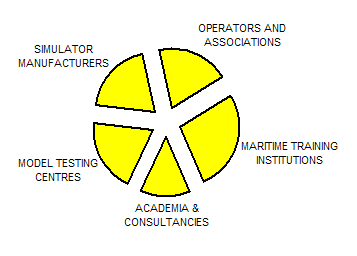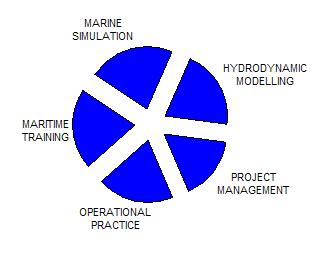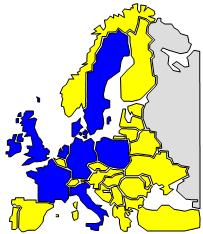|
The consortium
consists of a well-balanced group; many of whom have collaborated on
previous projects. The group have suitable representation for each
of the key subject-areas necessary to achieve the project goals.
Two of the partners represent expertise from ACADEMIA AND
CONSULTANCY and are specialist in theoretical methods for both modelling and numerical simulation. In addition these two partners
are specialist in ship manoeuvring performance and have significant
experience with azimuthing control devices. Three more of the
partners represent the leading MODEL TESTING CENTRES, having
significant expertise in both experimental and theoretical modelling
methods. All of the Model Testing Centres involved in the project
are experienced with the testing of azimuthing control devices
and/or the ships that use them. Three of the participating partners
represent world leading MARINE SIMULATOR MANUFACTURES. In addition
to expertise in simulation these partners are also specialist in
ergonomic bridge design and the man-machine interface. This
includes expertise in the design and use of bridge control systems
used for ships equipped with azimuthing control devices. Four more
of the partners are leading MARITIME TRAINING INSTITUTIONS, specialist
in bridge-crew training and expert in the understanding of human
physical and behavioural components. In addition these Institutions
have existing training tools and are experienced
in the use of ships equipped with azimuthing control devices.
Finally, three
more of the participating partners represent the end-users in the
form of OPERATORS AND PILOT ASSOCIATIONS. Of these, each either
manages ships equipped with azimuthing control devices, represent
those that do, and/or are responsible for the training and
operation of bridge-crews that operate such ships. The consortium
make-up is represented graphical in the yellow pie-chart (below); clearly demonstrating
the well-balanced nature of the group as a whole.

The above
description of partner’s expertise generalizes participant into
their predominant subject-area. However, not all disciplines are
mutually-exclusive; in fact, may partners have significant
experience and expertise in more than one area. To demonstrate that the
skills of the group as-a-whole are also well-balance, the partners contributing
expertise relative to the project is given in the blue pie-chart
(below).
As can be seen from the results, the
relative expertise is well-distributed across the project
disciplines.

In addition to the
well-balanced technical expertise, the consortium make-up
demonstrated an excellent geographical spread. Of the 14 partners
making-up the consortium, there are representatives from 9 different
countries from within Europe. In addition it is intended that the
activities of the Advisory Committee should integrate the expertise
from International Associated countries.
The map (below) provides a
graphical representation of the consortium geographical spread and
details of the contributing counties. This excellent geographical
distribution offers a very strong advantage for both the
dissemination and the exploitation of project activities. The
problems addressed by the project are of a global nature – the safe
and secure use of the seas being in the interest of all maritime
nations. Then, the excellent dissemination and exploitation
opportunity presented by the project consortiums varied geographical
composition serves both the social-economic needs of European
citizens and serves to improve safety and security for the global
maritime industry as a whole.

|
